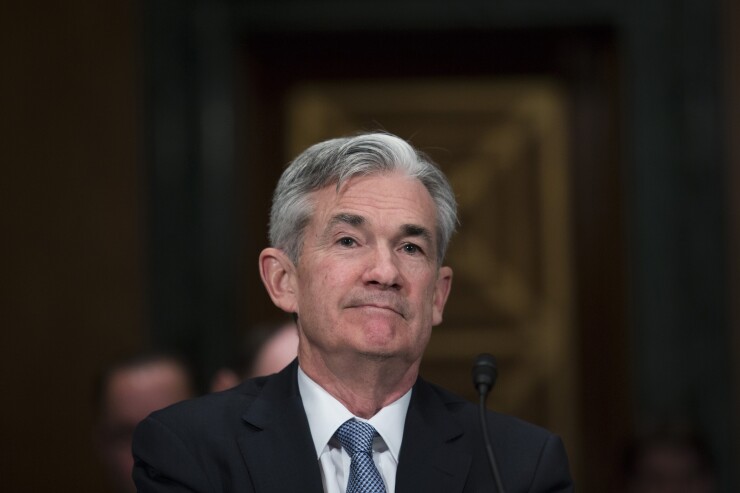As expected, the Federal Open Market Committee cut the fed funds rate target 25 basis points to a range of 1.50% to 1.75%.
“This action supports the Committee's view that sustained expansion of economic activity, strong labor market conditions, and inflation near the Committee's symmetric 2 percent objective are the most likely outcomes, but uncertainties about this outlook remain,” according to the post-meeting statement.
The statement no longer states the panel will act as needed to sustain the expansion. Instead, it said the Committee will “monitor the implications of incoming information for the economic outlook as it assesses the appropriate path of the target range for the federal funds rate,” suggesting it will now pause.
Federal Reserve Board Chair Jerome Powell had termed the first cut as a mid-cycle adjustment, and like previous similar moves in past expansions, it led to 75 basis points of cuts.

Once again, Federal Reserve Bank of Kansas City President Esther George and Federal Reserve Bank of Boston President Eric Rosengren, dissented in favor of no change in the target.
By removing the term “act as appropriate," the panel is signaling it will pause, said Tom Garretson, fixed income strategist at RBC Wealth Management. "Our concern is that the bar for further rate cuts is now higher, as some officials have previously stated that they would prefer to wait for signs of an actual economic downturn to cut rates — given limited scope to do so. Bigger risk that the Fed falls behind the curve on the economy."
But, he suggested, "any pause will be short-lived, as further easing will likely be necessary as the economy continues to slow. Yield curves already flattening on the relatively-hawkish statement, and could continue to do so into the end of year if the Fed gets too aggressive in making the case for a pause."
GDP
GDP rose 1.9% in the third quarter, while business fixed investment fell 3.0%, the Commerce Department reported Wednesday.
Economists polled by IFR Markets expected 1.7% growth in the quarter.
“The consumer remained the primary growth driver, while investment surprised to the downside, reflecting soft global growth and trade uncertainty as well as some special factors,” according to a note from Morgan Stanley Research.
The stronger-than-expected read suggests “recession will be avoided,” according to Brian Coulton, Fitch Ratings chief economist. “The improvement in consumption after the wobble in Q1 has been sustained and housing investment recovered in Q3, likely boosted by lower rates.”
“The deceleration in U.S. economic growth this year reflects tariffs and trade-related uncertainties, slower global growth, the fading boost from the Tax Cuts and Jobs Act, and geopolitical risks,” said Berenberg Capital Markets U.S. Economist Roiana Reid.
The big drop in business fixed investment was “more than offset” by “healthy growth in real consumption (+2.9% q/q annualized), the first increase in residential fixed investment since Q4 2017 and solid growth in government purchases,” she wrote in a note.
“Looking ahead, we expect consumption growth to remain above 2%, and continued solid growth in residential fixed investment and government purchases. But, the prolonged industrial slowdown and sluggish global demand will likely keep headline real GDP growth modestly below 2% through H1 2020,” she added. “We expect real GDP growth to return close to its longer-run potential rate, modestly above 2%, thereafter.”
Quarterly refunding
The Treasury Department will raise $23.5 billion new cash by selling $84 billion to refund $60.5 billion of maturing securities. Treasury will offer $38 billion three-year notes on Nov. 5, $27 billion 10-year notes on Nov. 6 and $19 billion 30-year bonds on Nov. 7.
Employment
Ahead of Friday’s employment report, ADP said private sector employment grew by 125,000 jobs in October. The September gain was revised down to 93,000 from the previously reported 135,000.
Economists expected 120,000.
“Job growth has throttled way back over the past year,” according to Mark Zandi, chief economist of Moody’s Analytics. “The job slowdown is most pronounced at manufacturers and small companies. If hiring weakens any further, unemployment will begin to rise.”





